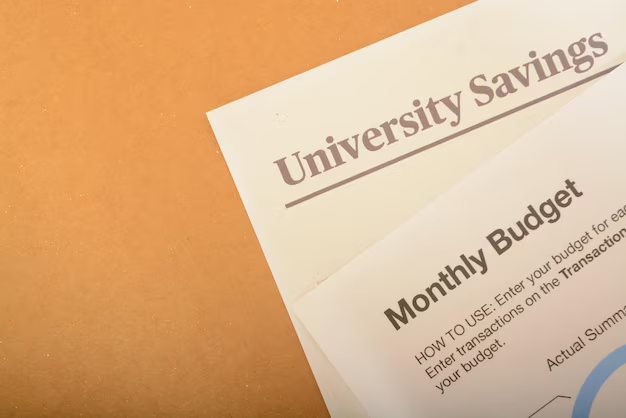Strategies to Reduce Your Student Loan Debt Effectively
In the complex world of higher education financing, student loan debt can feel like an unavoidable reality. Many graduates and even current students find themselves facing a mountain of debt that can impact life choices from buying a home to starting a family. However, there are actionable strategies you can employ to reduce this burden. This guide explores various approaches to help lower your student loan debt, providing practical steps for a more financially secure future.
Understanding the Scope of Student Loan Debt
Why Student Loan Debt Matters
Student loan debt has become a significant financial hurdle for many individuals. Understanding its dynamics is crucial to effectively addressing it. The burden often impacts major life decisions and can even shape career choices. By learning how to manage and reduce this debt, you can take control of your financial future.
The Emotional Toll of Debt
Debt isn't just a financial issue; it has emotional and mental dimensions as well. The stress associated with large debts can affect your health and relationships, making it essential to approach debt reduction strategically. By taking steps to manage your debt, you can alleviate some of the stress and improve your overall well-being.
Tailored Strategies for Debt Reduction
1. Refinancing and Consolidation
Refinancing involves replacing your existing loan with a new one at a lower interest rate, which can reduce monthly payments and total interest paid over the life of the loan. Consolidation combines multiple loans into a single payment, which can simplify your payment process.
- Pros: Potentially lower interest rates, simplified payments.
- Cons: Longer repayment term may result in paying more interest over time, potential loss of borrower benefits (such as deferment options).
2. Income-Driven Repayment Plans
Income-driven repayment plans adjust your monthly payment based on your income and family size. These plans can make payments more manageable monthly, although they might extend the loan term.
- Pros: Payments tailored to your income, potential for loan forgiveness.
- Cons: Longer repayment terms might accrue more interest, periodical re-certification required.
3. Public Service Loan Forgiveness (PSLF)
PSLF is a program offering loan forgiveness to borrowers who work full-time in eligible public service jobs and make 120 qualifying payments.
- Pros: Potential for substantial debt forgiveness without income tax implications.
- Cons: Strict eligibility and documentation requirements, limited to specific sectors.
4. Employer Assistance Programs
Some employers offer student loan repayment assistance as part of their benefits package. Engaging with such programs can substantially reduce your debt burden as part of your employment compensation.
- Pros: Direct assistance in paying off loans, beneficial for retention.
- Cons: Might require long-term commitments to the employer.
Practical Tips for Managing Payments
Budget Wisely: Create a monthly budget prioritizing loan repayment. Track income and expenses to find areas where you can cut costs and redirect funds to your loans.
Make Extra Payments: Any additional payments go directly towards the principal, reducing the overall interest paid and potentially shortening the loan term.
Automate Your Payments: Setting up automatic payments can often reduce your interest rate slightly and ensures that payments are made on time.
Utilize Windfalls: Use bonuses, tax refunds, or any unexpected financial gains to make extra payments on your student loans.
Related Financial Strategies
Building an Emergency Fund
An emergency fund is essential in preventing additional debt. Aim to save at least three to six months' worth of living expenses to cover unforeseen financial challenges.
Credit Monitoring and Repair
Good credit health is vital, as it affects your ability to refinance loans or get better interest rates. Regularly check your credit report for errors and work on improving your credit score.
Debt Snowball and Debt Avalanche Methods
While traditionally used for credit card debt, these methods can be applied to student loans. The Debt Snowball Method involves paying off the smallest debts first to build momentum. The Debt Avalanche Method focuses on tackling the highest interest rate debt first, potentially saving you money on interest.
Visual Summary of Key Debt Reduction Strategies
Here's a handy summary of approaches to reduce student loan debt:
| Strategy | Pros | Cons |
|---|---|---|
| Refinancing & Consolidation | Lower interest rates, simplified payments | Potential loss of benefits, might extend term |
| Income-Driven Repayment Plans | Customized to income, forgiveness possibility | Longer terms, more interest accrued |
| Public Service Loan Forgiveness | Tax-free forgiveness for qualified workers | Stringent requirements, specific to certain jobs |
| Employer Assistance Programs | Benefits as part of compensation | May require long-term commitments |
| Building an Emergency Fund | Financial safety net | Time-consuming to build |
| Debt Snowball & Avalanche | Motivational, potentially saves on interest | Requires discipline, takes time |
Empowering Your Financial Future
Taking control of student loan debt requires a strategic approach. By utilizing the strategies outlined here, you can make substantial progress in reducing your debt and strengthening your financial health. Consider each option carefully, and select the combination of strategies that fits your individual circumstances and goals.
Attaining financial freedom is a journey. Equip yourself with knowledge, remain proactive in your approach, and remember that taking even small steps consistently can lead to significant change over time. Empower yourself through informed choices, and lay the groundwork for a secure financial future.

Related Topics
- Are Student Loans Considered As Debt When Getting a Heloc
- Are Student Loans Considered As Debts When Getting a Heloc
- Are Student Loans Secured Or Unsecured Debt
- Are Student Loans Unsecured Debt
- Can I Buy a House With Student Loan Debt
- Does Student Loan Debt Affect Your Credit Score
- Does Student Loan Debt Die With You
- How Big Is Student Loan Debt
- How Can I Find Out My Student Loan Debt
- How Can I Get Rid Of Student Loan Debt